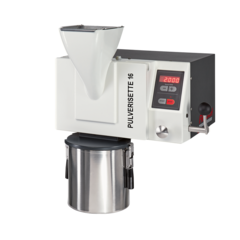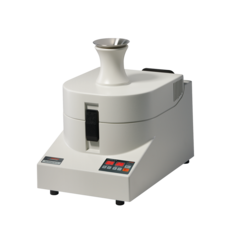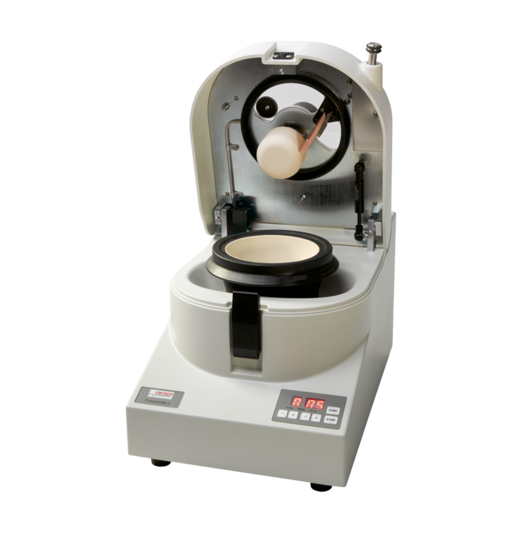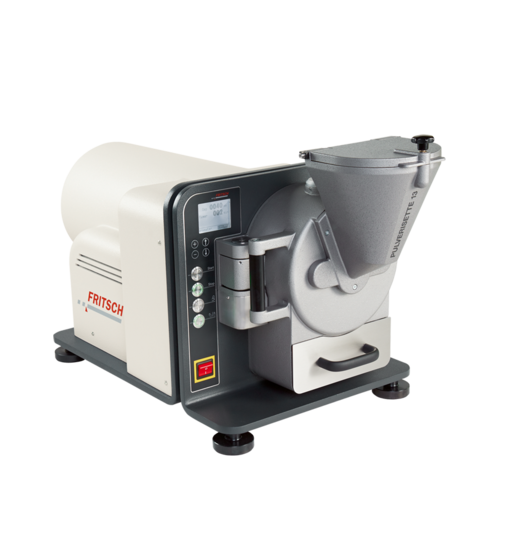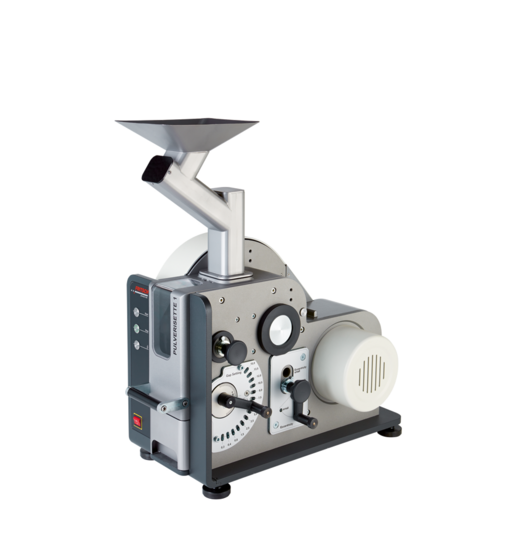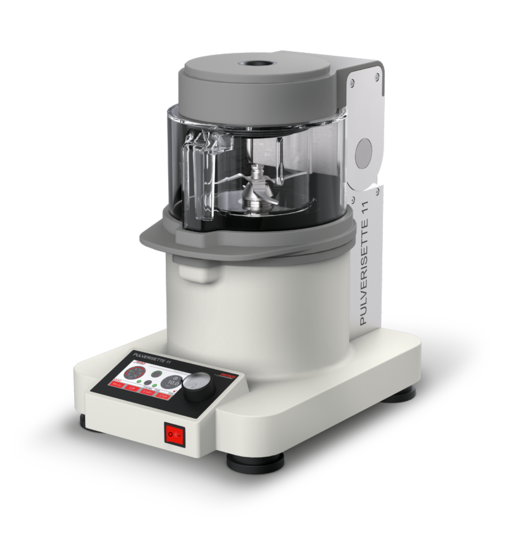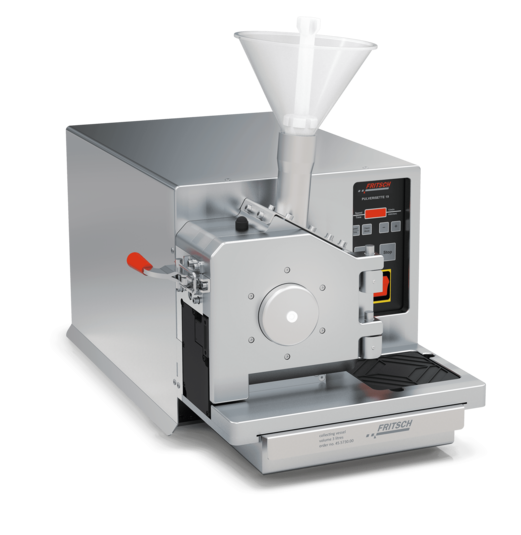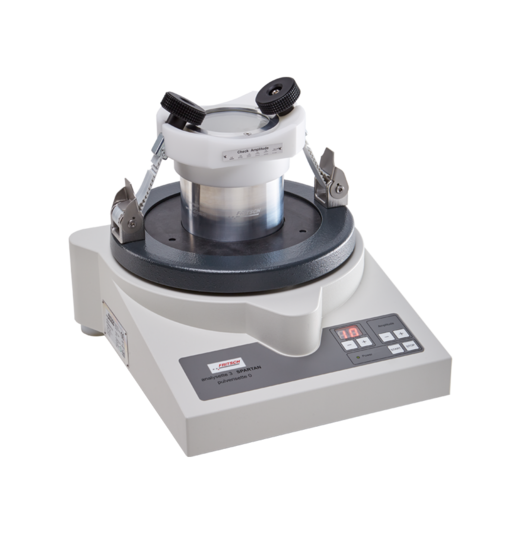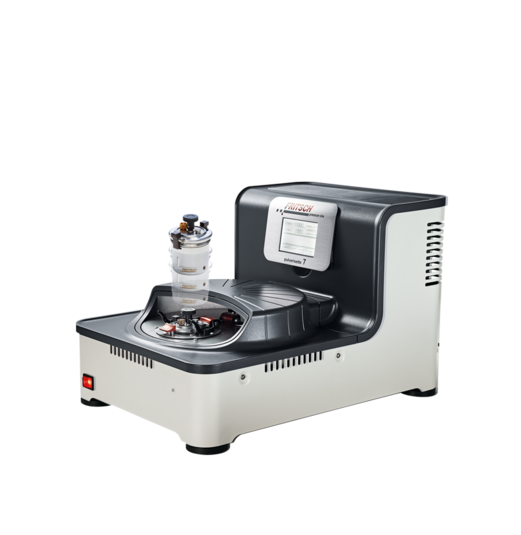Further Rotor / Beater Mills
FURTHER PRODUCT GROUPS
Product details
Technical Data
| Working principle | impact, shearing, cutting |
| Optimal for material type | soft, medium-hard, brittle, tough, elastic, fibrous, temperature-sensitive |
| Grinding tools | impact rotor, impact bar and sieve rings, cutting rotor and sieve shells |
| Materials of the grinding tools | stainless steel, stainless steel 316L, pure titanium grade 2, cutting rotor stainless steel with hardened stainless steel or hardmetal tungsten carbide knives; TiN-coated with zirconium or titan knives |
| Min. sample quantity (depends on sample material) | < 10 ml |
| Max. feed size | < 15 mm |
| Final fineness | d50 < 40 μm |
| Rotational speed at 50 Hz (60 Hz) | Impact: 2,000 - 24,000 rpm Cutting rotor: 2,000 - 18,000 rpm |
| Peripheral speed | Impact rotor: 10.2 m/s – 121.9 m/s Cutting rotor: 8.8 m/s – 79.2 m/s |
| Feeding | batchwise or continuous grinding with FRITSCH Cyclone separators |
| Sample throughput (depending on the material and sieve size) | up to 15 l h and more |
| Drive | 3-phase current asynchronous motor with frequency converter |
| Electrical details, additional voltages available upon request | 200-240 V/1~, 50-60 Hz |
| Drive power | 2500 Watt |
| Power consumption | 2700 VA (200..240 V) |
| Protection class | IP 22 |
| Emission sound pressure level at the workplace according to DIN EN ISO 3746 (depending on the material to be ground, adjusted rotor-speed and instrument configuration) | approx. LpAd = 82 dB |
| Weight | 33 kg |
| Dimensions (W x D x H) | bench top instrument 42 x 52 x 45 cm |
| Norm standards | CE, UKCA, UL/CSA |

